The Legend of Prince Siddhartha: Buddhist Philosophy Part I
Running parallel to the maturation and evolution of Hellenic philosophy, to the East the Indo-Aryan people were going through a similar intellectual revolution from the prevalence of ritual and ceremonial worship of gods and goddesses embedded in their mythologically steeped traditions as preserved in their Hindu (Vedic) scripture, to a more speculative and metaphysical mode of inquiry into the nature of reality and existence and its relationship to change, impermanence, and the immortality of the Soul, or Self (Atman) as it was referred to in the Vedas.
The aim of this inquiry, again just as it was in the West in the Hellenic philosophical tradition which was emerging at contemporaneously, was to explain not only the nature of reality, being, or “existence”, but also mankind’s place in as well as expound upon the goal of life, i.e. happiness, enlightenment, nirvana, liberation, moksha, eudaemonia or whatever other term the specific theo-philosophical tradition chose to denote this idea. Unique to the Indo-Aryan philosophical tradition, which was also shared by Buddhism its close cousin, was that there existed a path to the ultimate liberation of the human Soul, by means of which death itself could be overcome. This belief system was not just steeped in the notion of “realization”, or absolute knowledge (vidya), that which was spoken of by the great sages or seers of old, i.e. the Rishis, but also was characterized and underpinned by a system of metaphysics within which the nature of the Soul could be understood, and through which the means by which the Soul could be ultimately liberated rested upon. This fundamentally intellectual development was driven not only by the analysis, commentary and interpretation of the more esoteric and philosophical aspects of the Vedas, or more specifically the Upanishads, but also by the teachings of Siddartha Gautama, the historical figure who is the founder of Buddhism.
Buddhism takes root in the Indian subcontinent toward the end of the 5th century BCE or so, originating in the northeast border between modern India and Nepal where Siddhartha Gautama was born (and where he presumably taught as well) at around the same time that the first of the Upanishads were compiled. In modern academic literature, Buddhism is typically considered to be part of a broader philosophical movement that arose as an alternative to Vedic religion in the first half of the first millennium BCE in the Indian subcontinent called Śramaṇa. This movement included Jainism, as well as other heterodox – i.e. not adhering to the Vedas as authoritative scripture – theo-philosophical schools of thought.[1]
The rise and influence of Buddhism then must be seen within the context of a broader intellectual movement that arose on the outskirts of the ancient Indo-Aryan civilization which reflected a basic and fundamental dissatisfaction with Vedic philosophy, culture and tradition as a means to liberation. It represented almost a rebellion of sorts to the orthodox theological and religious dogma that was prevalent at the time which was encased within a very structured and elitist socio-political structure, i.e. Varna, which closely guarded theological study and knowledge by a specific class of society, i.e. the Brahmins, and which held that moksha, or immortality, was to be practiced only by the well trained and select few. Siddhartha, after much trials and tribulation, and after following many different paths and teachings, concluded that the prevailing orthodox Vedic philosophical system as a means to liberation or happiness was fundamentally flawed and after his Awakening, came up with an alternative philosophy (and underlying metaphysics) which became the basis of Buddhism in all its different variants today.
The popularity and spread of Buddhism in the Indian subcontinent in the last half of the first millennium BCE, which spread all the way into the Far East and regions of Chinese cultural influence in the first few centuries of the Common Era and beyond, along with the establishment of Vedic philosophy as represented in the Upanishadic literature, is in many respects directly analogous theo-philosophical development in the Hellenic world which arose out of the prevailing mythological and theological based religious traditions from which our modern (Western) notion of “philosophy” itself was conceived. It can also be understood as analogous to the Christian revolution in the first few centuries of the Common Era as Jesus of Nazareth rejected the fundamental teachings of Judaism and proclaimed his new philosophy, i.e. the Gospel, for which he was ultimately crucified. The teachings of Jesus, who later became known as Christ or Logos personified, as interpreted and compiled by his followers who founded Christianity as we know it today, not only rejected the religion of the Hebrews (of which Jesus was of course a member), but also the so-called “pagan” religions that were prevalent in the Mediterranean at the time, proclaiming that not only was there one true God as the Hebrews had done before him, but that this God was accessible to, and was in fact indistinguishable from, the very inmost essence of all mankind.
But Christianity as well, in its formation in the after the death of Jesus and as the Church and its associated religious dogma became codified and canonized into the Bible, also integrated Hellenic theo-philosophy as well, this element of Christianity being specially emphasized by the early Christian Church Fathers. Just like Jesus then, Buddha rejected the religious traditions of his forefathers proposed not only an altogether different theo-philosophy, but also a fundamentally different worldview, i.e. metaphysics, as well as a completely different means and approach by which the ultimate goal of life could be reached, a goal which he defined as the cessation of suffering. Buddhism then was born out of Hinduism just as Christianity was born out of Judaism, and Buddha was a Hindu just as Jesus was a Jew.
After searching for keys to unlock the secret of human suffering in his many years of wandering after he left behind his family and kingdom, Buddha ultimately came to find that none of the teachings he encountered answered his questions satisfactorily, and therefore he rejected Vedic philosophy in all its variations and after his “Awakening”, came to understand and teach a practical handbook of sorts for all seekers of Truth and Knowledge, a much more simplified and practical philosophy, a way of life really, than was then offered by the more traditional orthodox Vedic philosophical schools.
The mythical narrative surrounding the birth, life and death of the Prince Siddhartha is consistent with the narratives of most pre-historical heroic figures (Jesus, Hercules, etc.) and starts with stories of his immaculate conception into a ruling family in the foothills of the Himalayas in Northern India. It is said that upon his birth, which his mother did not survive, he was visited by a great sage who predicted that he would either be a great ruler of men or a great religious teacher and reformer (holy man). His early childhood and young adulthood was spent living the life of luxury within the confines of multiple palaces and exposed to all the pleasures that one might expect were accessible to a prince. It is said that his father, given the prophecy upon his birth of the potential for his son to be a great religious prophet and teacher, took great pains to shelter him from any outside influences that would expose him to the suffering and harsh realities of the world which in turn might lead to his renunciation of his birthright. It is said that he married and had a son and spent the first 29 years of his life in the sheltered and elaborate palace of his father where no desire of his was left unfulfilled.
In his late twenties, a story is told that one day he left the palace of his own volition to view his subjects and kingdom first hand, despite the misgivings and sheltering instincts of his father. On this journey outside the palace walls, he was exposed to his first examples of the great suffering of the world, seeing first an old man on the verge of death, then a diseased man in great suffering and pain, followed by the corpse of a dead man, and lastly by an ascetic monk who had renounced the world in the classic Vedic monastic tradition which was prevalent at the time. This experience is said to have completely transformed his view of the world and invoked feelings of tremendous and overwhelming compassion for the plight of his people, inspiring him to renounce his royal pedigree, leave his wife and child, and begin to live the life of an itinerant wandering monk to search for truth and the meaning of life, which was from his perspective the source and possible secret to the end of suffering.
Prince Siddhartha then spent the next several years following various forms of extreme Vedic asceticism and renunciation to try and find the true nature of existence and the path to illumination as prescribed by the teachings of the Vedas, with each successive path and teaching that he followed getting him no closer to the answers to the questions that he was seeking. It is then said that after practicing these extreme forms of renunciation and deprivation that led him close to the edge of death, he finally gave up these practices as fruitless and settled down under a Bodhi tree (believed to be in Bodh Gaya, India), and resolved to sit in contemplation until either the solution to the nature of suffering and its ultimate liberation was revealed to him or die in the process.
After supposedly sitting in deep meditation for some 49 days, being tempted during his practice by various demons and gods with all sorts of worldly temptations to lead him astray (think Jesus’s 40 days and 40 nights in the desert having been tempted by Satan), at the age of 35 Siddhartha Gautama achieved Enlightenment and arose as the Buddha the name being derived from the root Sanskrit verb ”to know”, or “budh”, meaning “one who is awake”, i.e. the Awakened One. The term Buddha, or Buddha nature, has come to represent the eternal and ever-present nature of truth and existence which he came to embody after his enlightenment experience under the Bodhi tree.
Upon emerging from this deep meditative and transformative experience, which was supposed marked by a great earthquake when his state of enlightenment was achieved and the eternal truth and knowledge of the nature of suffering and the path by which it could be overcome was revealed to him, Prince Siddartha became Buddha. Although initially reticent to teaching this new found knowledge to the rest of mankind, believing that everyone was too steeped in ignorance and worldliness to understand, comprehend and ultimately practice the eternal Truth which was revealed to him, it is said that he was convinced by one of the great Indian deities, Brahma Sahampati, to at least try to teach for the good of mankind.
Thus began the teaching phase of his life from which the philosophical system of Buddhism as we know it today has been handed down to us. It is said that he traveled throughout India and taught his Four Noble Truths and Noble Eightfold Path, as well as instituted the practices of Buddhist monasticism, for some 45 years until his death sometime in the 5th or 4th centuries BCE. These teachings, sometimes referred to as his Buddha Dharma, or the Way of Buddha, represented a complete explanation and exposition of the laws of nature as they applied to the problem, and ultimate solution, of human suffering which was from his perspective the end goal of any theological or philosophical pursuit. He taught how the great cycle of birth, disease, decay and dying could be overcome by proper understanding, or knowledge of “reality”, or more precisely the shedding of ignorance of the existence of the Self and attachment to which to Buddha attributed the source of suffering.
The historical figure we know today as Buddha was raised on the northern Indian/Nepal border in the foothills of the Himalayas as a prince from an affluent ruling family, living and teaching somewhere between the end of the sixth and early part of the 4th centuries BCE but dated by most scholars to the 5th century BCE. What we know about the historical figure named Siddhartha Gautama who later became known as the Buddha, is from a corpus of textual material written that is handed down to us in in Pali[3], as well as somewhat later Sanskrit, Tibetan and Chinese transliterations of the Pali texts. The Tripitaka, or Pali Canon, which is term used for the orthodox and authoritative Buddhist texts, cover not only his teachings, but also include biographic material as well, the latter of which is interspersed with a variety of mythical accounts that established him as a pseudo-divine figure who was born to deliver his message for the good of mankind. Tripitaka (Tipitaka in Pali), means literally “three baskets”, and while the earliest parts of the canon are believed to have been compiled or transcribed within a few centuries after Buddha died, the biographic material is believed to have been incorporated into the corpus in the 2nd and 3rd centuries CE.
Siddhartha Gautama, or the “Awakened One” as he was referred to by his followers, is one of the most prominent and influential theo-philosophical teachers from antiquity whose influence has spread over the centuries from the Indian subcontinent throughout most of Asia and now in modern times to the West. In many respects the Pali Canon and teachings of the Buddha which are contained therein can be seen as analogous to the Four Gospels which contain various narratives of the life and teachings of Jesus of Nazareth and form the core part of the New Testament of the Bible which were written some decades after his death and were only later included as part of the Biblical canon.
According to most scholarly accounts, it is the Pali Canon that represents the oldest authoritative Buddhist scripture. This strain of Buddhism that considers the Pali Canon to be the authoritative Buddhist scripture is referred to as Theravada Buddhism, Theraveda meaning literally “school of elderly monks” in Pali, as opposed to the slightly more possible and well known variant of Buddhism, at least in the West, called Mahayana Buddhism – of which the more widely known schools of Zen and Tibetan Buddhism are representative for example – and relies on a different set of scriptures than the Theraveda school referred to as the Agamas (“sacred work” or “scripture” in Sanskrit or Pali), which are written in Classical Chinese and referred to as the Chinese Buddhist Canon, or Dàzàngjīng (大藏經).
Mahayana literally means “Great Vehicle” in Sanskrit and focuses more on the monastic aspects of Buddha’s teachings and emphasizes the, rules, rites and practices for those who wish to pursue enlightenment for the good of all sentient beings as Buddha himself did. These enlightened beings are called bodhisattvas, or “enlightened beings” in the Mahayana school and while the Mahayana school does not necessarily differ from the Theravada tradition (which precedes it historically) in terms of basic philosophical tenets and practices, it nonetheless developed a unique and relatively independent scriptural and philosophical tradition which codified and institutionalized specific doctrines, teachings and practices for the pursuit and attainment of enlightenment, what perhaps Buddhism in modern parlance is best known for.
Despite their differences in interpretation and practices, each adheres to the core basic teachings of Buddha as reflected in his Four Noble Truths and the Noble Eightfold Path, the latter of which outlines the true nature of reality and the causes of suffering and the former which outlines the intellectual and metaphysical basis for the basic precepts and practices which are to bring about the cessation of suffering and ultimately enlightenment and the end if the cycle of death and rebirth. While Buddhism does not lay out a philosophic doctrine per se, at least not in the classic Western sense of the term, nor does it lay out any systemic laws or beliefs as is characteristic of the Abrahamic religions, it does however lays out basic fundamental precepts about the nature of life and reality from which it establishes a path, the so called “Middle Way”, which is the means by which the bonds of attachment which ultimately lead to suffering can be broken for good, resting on the fundamental assertion that not only is enlightenment possible, but that there is a specific path which can be followed which will ultimately lead to nirvana, the term given to the cessation of suffering and the end of the “wheel of dharma”.
When analyzing the teachings of Buddhism, as reflected in the various textual sources which were compiled by his followers sometime after his death, we are left with very similar challenges and pitfalls when studying the philosophy of all of the great teachers in antiquity. While we can optimistically assume that his precise teachings and doctrines, words and phrases and terminology , were faithfully transcribed by his followers even if several generations of teacher and student transmission existed before any of the actual texts which codify his teachings were transcribed, we still nonetheless have to try and extract what he actually said and taught from the extant literature – for the texts were written in a variety of languages that a) in all likelihood do not reflect the actually language that he spoke, and b) we do know that he did not leave any written materials behind himself.
According to tradition, the transcription of the Pali Canon is the result of the Third Buddhist Council that was convened at the behest of the pious Indian emperor Ashoka Maurya (304-232 BCE) who ruled much of the Indian subcontinent in the third century BCE. His intent for convening the council, much like the Christian councils that were convened in the 3rd century CE onward, was to standardize the teachings, texts and some philosophical elements of Buddha’s legacy from amongst the various factions that had sprung forth after Buddha’s death, leading to the existence of a variety of teachers and philosophic schools who disagreed on many aspects of the Buddha’s message and precepts.
As the tradition has it, the council lasted nine months and consisted of senior monastic representatives from all around the emperor’s kingdom who debated various aspects of Buddhist doctrine, culminating in the canonization of the scripture, i.e. the establishment of the Pali Canon, and formation of the foundational principles and practices of Theravada Buddhism. After the council it is said that the emperor dispatched various monks who could recite the teachings by heart to nine different locations throughout the Near and Far East, laying the groundwork for the spread of Buddhist teachings and philosophy not just in the Indian subcontinent, but throughout the ancient world as far East to Burma and even as far West to Persia, Greece and Egypt.
The Tripitaka contain three major sections, (in Sanskrit) the Sutra Pitaka, the Vinaya Pitaka, and the Abhidharma Pitaka. The Sutra Pitaka is the oldest of the three parts of the canon and is said to have been recited by Ananda, Buddha’s secretary at the First Council, a meeting of five hundred disciples of Buddha shortly after his death to compile his teachings. It is divided into five sections of sutras which are grouped as nikayas, or “collections” – the Digha Nikaya or “Long Discourses”, the Majihima Nikaya or “Middle Discourses”, Samyutta Nikaya or “Connected Discourses”, the Anguttara Nikaya or “Numerical Discourses”, and the Khuddaka Nikaya or “Minor Collection”. Another disciple of Buddha named Upali is said to have recited the Vinaya portion of the Tripitaka which deals mostly with rules governing monastic life, reflecting the strong undercurrent of renunciation and monasticism which was an integral part of Buddhism from its inception. The Abhidharma portion of the is the youngest material and reflects the Buddha’s teachings regarding various deities in heaven during the final period of his Enlightenment and deals with various philosophical and doctrinal issues which help elucidate the some of the more esoteric and obscure aspects of the scripture.
It is from the Sutra Pitaka portion of the Pali Canon that we ascertain the core of Buddhist doctrine as it was understood by his followers and is interpreted by the various schools and practitioners throughout the world today.
[1] Śramaṇa (Samaṇa in Pali) is a Sanskrit word meaning “seeker”, or “one who performs acts of austerity”, or simple an “ascetic” and is used to refer to several Indian theo-philosophical intellectual developments that emerged in the first half of the first millennium BCE as distinct, and in opposition to, the more prevalent “orthodox” Vedic tradition which came to represent the basis of the Hindu faith, hence their categorization as “heterodox”. These intellectual theo-philosophical developments and schools of thought ran directly parallel, and are believed to have influenced, the philosophy of the Upanishads. Theo-philosophical traditions such as Jainism, Buddhism, as well as the lesser known traditions such as Ājīvika, Ajñana and Cārvāka are all considered to be part of the Śramaṇa movement. Classical Indian philosophical conceptions such as saṃsāra and moksha are believed to have originated within these schools of thought, conceptions that were later integrated into some of the major Indian philosophical schools such as Yoga and Samkhya. See Wikipedia contributors, ‘Śramaṇa’, Wikipedia, The Free Encyclopedia, 18 September 2016, 02:20 UTC, <https://en.wikipedia.org/w/index.php?title=%C5%9Arama%E1%B9%87a&oldid=739942627> [accessed 18 September 2016] as well as the Stanford Encyclopedia of Philosophy entry on Buddha: Siderits, Mark, “Buddha”, The Stanford Encyclopedia of Philosophy (Spring 2015 Edition), Edward N. Zalta (ed.), URL = <http://plato.stanford.edu/archives/spr2015/entries/buddha/>.
[3] Pali is a Prakrit language native to the Indian subcontinent, believed to have originated in Northern India, and very closely related to Sanskrit, with most words existing in both languages with simple phonetic transliterations between the two. Pali is a language in the Indo-European/Indo-Iranian language family whose main historical significance is that it is the language of one, if not the, main source of Buddhist scripture and philosophy

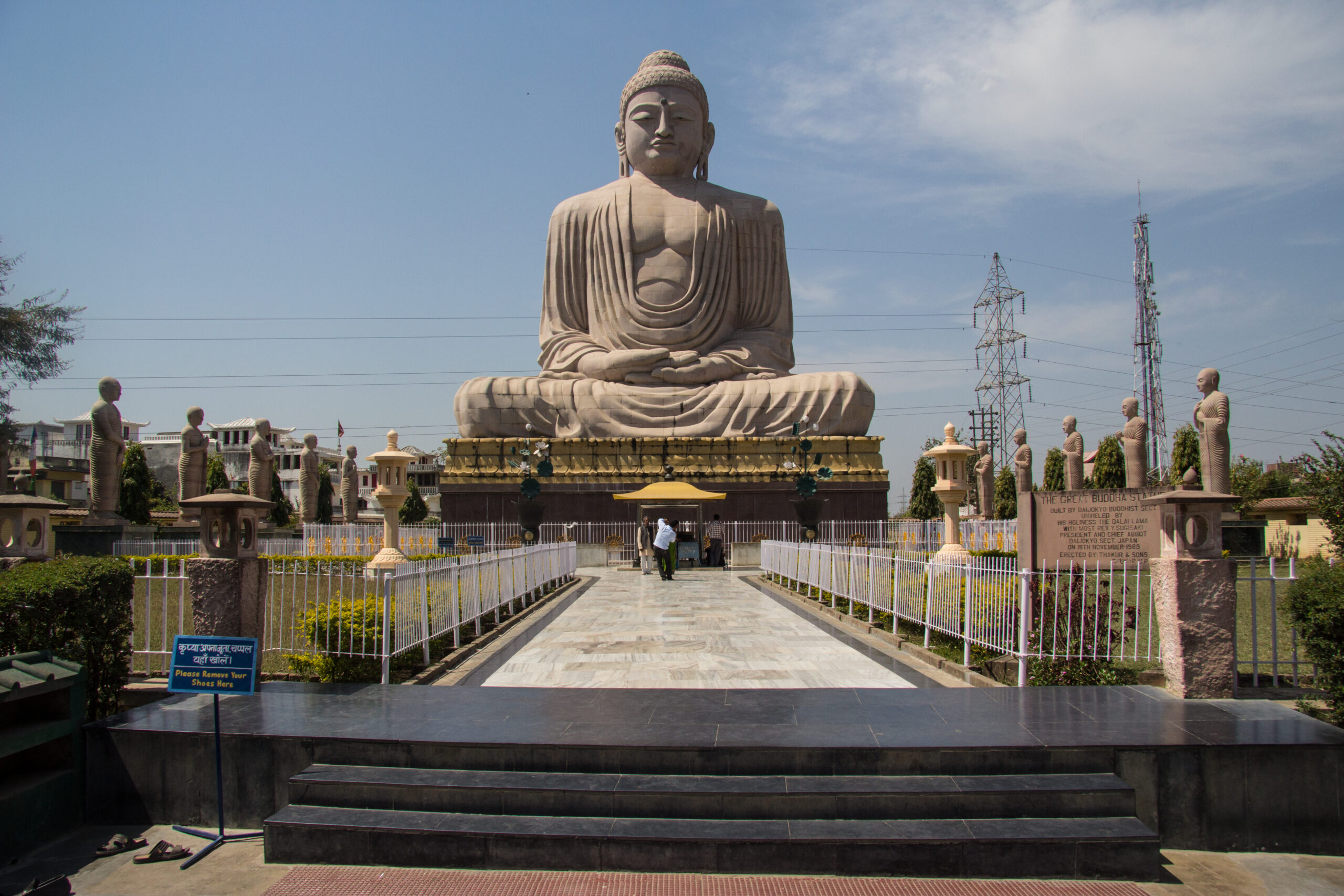
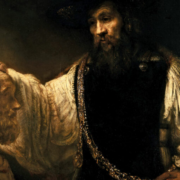
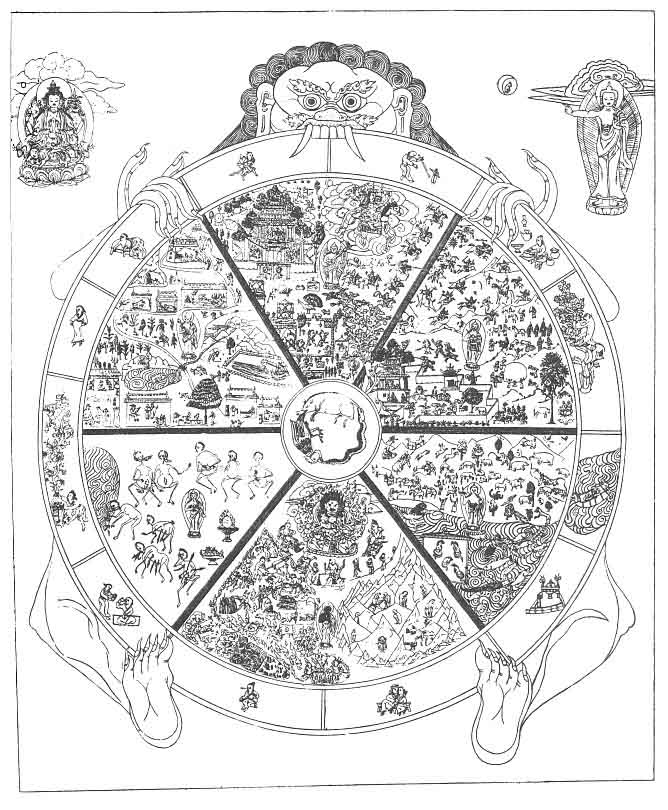
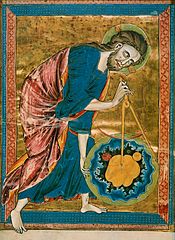
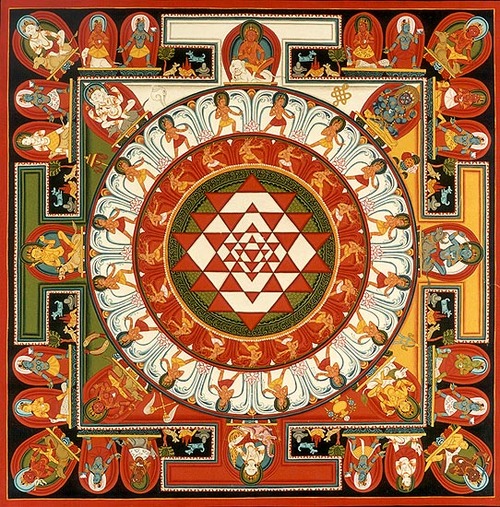



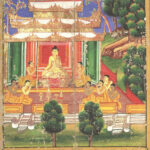
Leave a Reply
Want to join the discussion?Feel free to contribute!